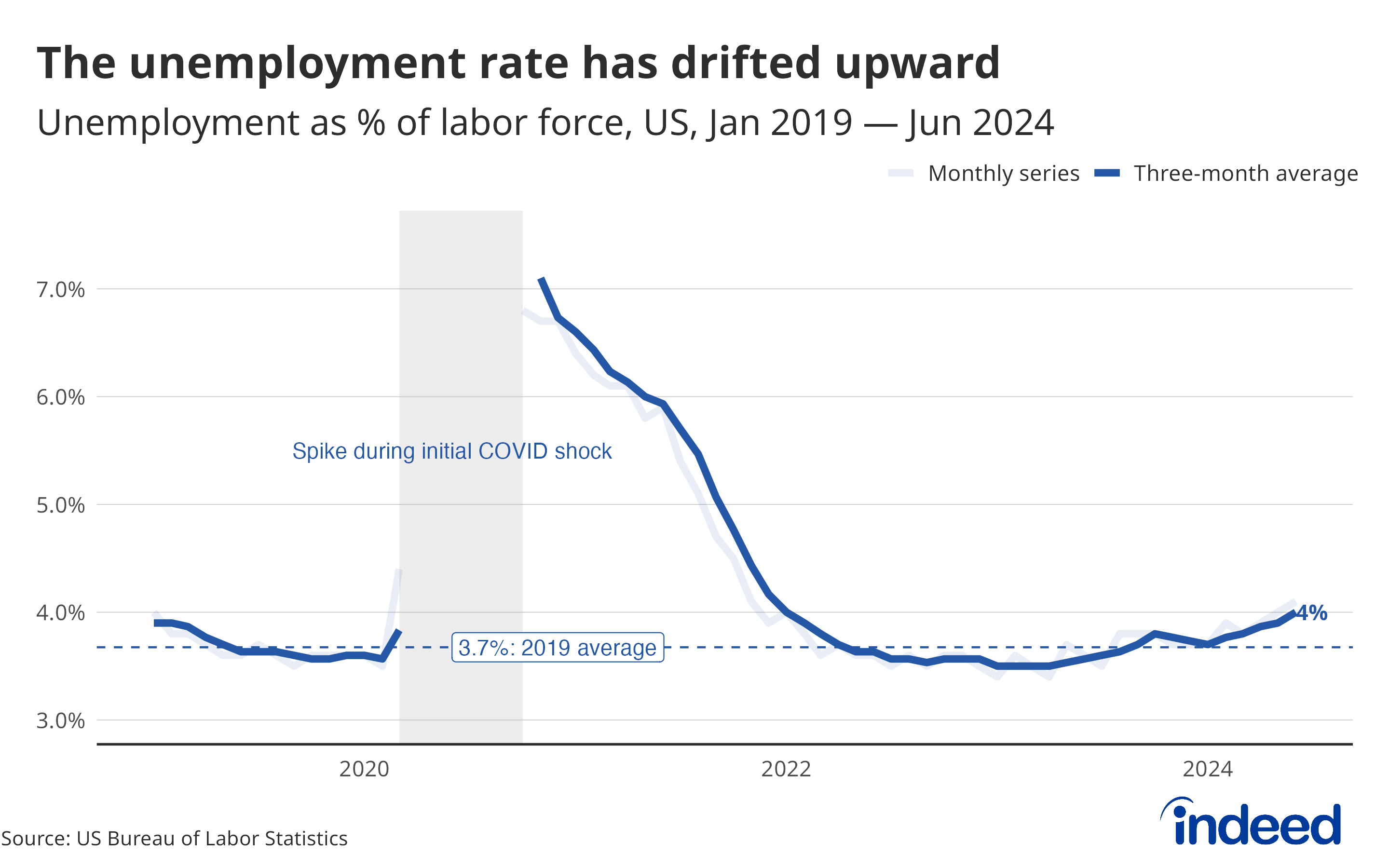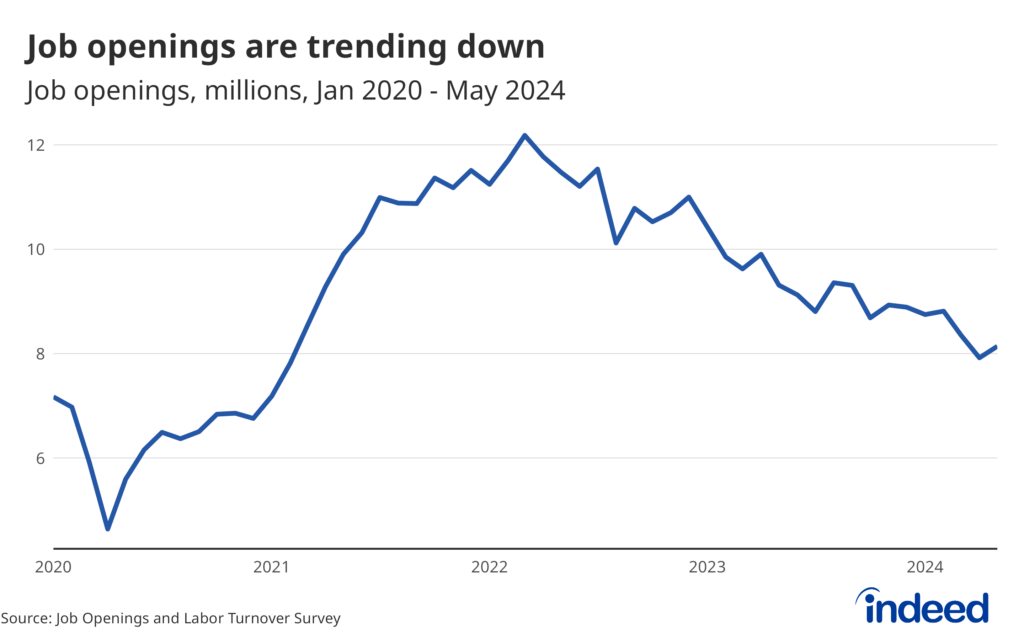Key points:
- The unemployment rate continues to drift upward, hitting 4.1% in June.
- Payroll growth remains robust but continues to trend downward as the three-month average declined to 177,00 jobs, a pace similar to 2019’s average growth.
- The US labor market is currently in a good spot, but the future won’t be as pleasant if current trends continue.
For the past few years, the moderation of the US labor market was a mostly welcome trend as the demand for and supply of labor came back into balance. But now that the labor market has readjusted, any further cooling is a riskier proposition. The June data is brimming with signs of a slowing labor market: rising unemployment, slowing job gains, and moderating wage growth. For now, the labor market remains robust, but the future is uncertain. Today’s report shows the temperature of the labor market is still pleasant, but if current trends continue the weather could get uncomfortably cold.
The unemployment rate continues to drift upward, hitting 4.1%, the highest since November 2021. A rate around this level is consistent with a strong labor market. But the level isn’t the issue — the steady rise is the troubling factor. Over the past several months, the rate at which employed workers have moved into unemployment has steadily increased, a sign that job loss might be on the rise. This trend deserves careful consideration. At the same time, the share of prime-age workers with a job has flatlined at 80.8%. This could be a sign that the labor market has reached full employment, but also that job gains have lost momentum.
The good news is that job gains, even if they have slowed, are still fairly broad-based. The diffusion index — a measure of how broad-based job gains are — was well above 50 in June, indicating that the majority of industries are adding jobs. The gains might be concentrated in Education, Health Services, and Government, but most industries are slowly adding jobs.
The trend is clear: the labor market is cooling off. The question is whether the recent run of data is simply a continuation of the relatively painless moderation of the past few years or the beginning of something more damaging. The labor market is chugging along for now, but evidence is mounting that if it continues to slow down it could stall.


